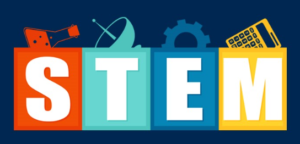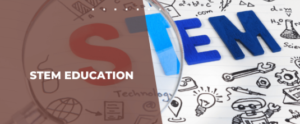
Technology and STEM Education’s Future Introduction
Particularly in science, technology, engineering and mathematics (STEM), technology’s importance in education especially in today’s fast changing environment has grown even more clear. Integration of cutting-edge technologies into the classroom is changing how kids learn, engage and get ready for future professions as we travel farther into the 21st century. The several ways technology is affecting STEM education, its advantages, difficulties, and the possible future scene of learning in these important domains will be discussed in this paper.
Comprehending STEM Education
STEM: What is it?
Science, technology, engineering, and mathematics together stand as STEM. Solving world problems and encouraging creativity depend on these fields. STEM education emphasizes a multidisciplinary approach that inspires among pupils critical thinking, problem solving and cooperation. The growing need for STEM workers calls for educational systems to change and properly equip their pupils.
STEM Education’s Value
Modern employment demand not only relevant but also vital abilities that STEM education provides for its students. From robotics to coding to data analysis and environmental science, a solid background in STEM can open many employment. Moreover, it stimulates inquiry and lifelong learning, which helps students to fit the rapid changes in society and technology.
The Value of Technology for STEM Education Improved Learning Opportunities
Improvement of learning opportunities is one of the most important effects of technology on STEM education. Previously only found in physical labs, digital technologies include simulations, virtual labs, and interactive software give students hands-on experiences. Platforms like Labster, for example, let students do virtual reality experiments, hence increasing the accessibility and interest in science.
Technology driven by personalized learning helps to create experiences catered to particular student requirements. Software for adaptive learning can evaluate a student’s concept knowledge and change the course of instruction. This guarantees that pupils understand basic concepts before tackling more difficult subjects, therefore improving the learning results.
Cooperation and Speaking
Additionally helping teachers and students to cooperate are modern technologies. Easy communication made possible by tools as Google Classroom, Microsoft Teams, and Zoom lets group projects and cross-border talks take place. This cooperative approach reflects actual workplaces where communication and teamwork are absolutely vital.
STEM Education Emerging Technologies: Artificial Intelligence (AI)
Education is not an exception as artificial intelligence is revolutionizing several spheres. Platforms controlled by artificial intelligence may evaluate student performance, offer instantaneous comments, and even project learning results. Using artificial intelligence, teachers can spot early on at-risk pupils and start interventions to help their learning.
VR and AR Virtual Reality and Augmented Reality
Students’ interactions with STEM disciplines are changing in response to virtual reality and augmented reality. Students can investigate difficult settings such as the human body or outer space in an engaging manner with VR. Conversely, AR enhances the learning process by overlaying digital data onto the actual world. AR apps let pupils, for example see mathematical ideas or investigate scientific events in three dimensions.
Robots and Programming
Curriculum integration of robotics and coding is gathering steam. Lego Mindstorms and Scratch let children design their own projects, therefore encouraging their imagination and ability to solve problems. Learning to code not only helps kids to grasp the technology they use daily but also gets them ready for jobs in a technologically advanced environment.

Technology’s advantages for STEM education include higher engagement.
Technology grabs students’ interest and increases the interesting nature of learning. Gamified learning applications and interactive technologies inspire students to participate actively in their education. Students are thus more likely to engage and remember material, which promotes a better knowledge of STEM ideas.
Availability of Resources
Technology has made a great wealth right at students’ hands. Online databases, instructional films, and open-source materials give students several points of view and expertise. This accessibility helps kids to learn independently and enables them to investigate subjects beyond the classroom.
Real-World Uses
Using technology in STEM education helps students to observe the practical uses for what they are studying. Data analytics tools, for instance, let students examine actual data so they may better appreciate the applicability of mathematics and statistics in addressing practical problems. This link sharpens drive and gets students ready for their future professions.
Challenges of Including Technology into STEM Education: Equity and Access
Technology brings difficulties, especially with relation to equity and access, even if it has many advantages. Different learning opportunities arise from not all pupils having the same access to technological resources. Schools have to solve these disparities so that every student may gain from developments in technology for their field of study.
Teacher Preparation
Effective integration of technology into STEM education depends on well educated teachers. Teachers have to be ready not only with the required technical knowledge but also with pedagogical techniques to properly include technology into their instruction. Teachers must constantly be professional developers and supported if they are to keep up with changing technologies.
Reliance and Distraction
The possibility for diversion that technology presents presents still another difficulty. Given the abundance of internet resources, pupils may easily become diverted. Furthermore, pupils run the danger of over depending on technology, whereby they can find it difficult to acquire basic skills without digital help. Teachers have to combine encouraging autonomous thinking with using technology.
STEM Education’s Prospect Using Technology
Hybrid Learning Spaces
STEM education’s future will probably witness a move toward hybrid learning environments combining internet resources with conventional teaching strategies. This method gives adaptability and fits several learning environments. While teachers can provide individualized help as needed, students can interact with materials at their own speed.
Growing Attention on Multidisciplinary Learning
The lines between STEM disciplines are blurbing as technology develops. Interdisciplinary learning will be stressed in future STEM education to inspire students to combine ideas from many fields. Projects combining biology, engineering, and technology, for example, will proliferate reflecting the linked character of contemporary problems.
Constant Learning and Skill Development
The idea of lifelong learning will become more important in a society when technology developments are continuous. Along with academic knowledge, STEM education will stress the development of critical thinking, creativity, and adaptability qualities that are absolutely vital. Pupils will be urged to have a growth attitude and keep on learning outside of the classroom.
Final Thought
The junction of STEM education and technology is opening the path for an interesting, customized, and efficient learning environment. Although there are difficulties, including incorporating technology into STEM education has unquestionably benefits. Prioritizing fair access to resources, funding teacher development, and creating an environment that supports inquiry and innovation will help us to shape our future.
Looking ahead, it is certain that technology will keep changing the terrain of STEM education, equipping students not only for professions in these domains but also for a world that calls flexibility, ingenuity and a lifetime of learning. The road ahead is bright; by using technology’s possibilities, we can equip the next generation of creators and problem solvers.